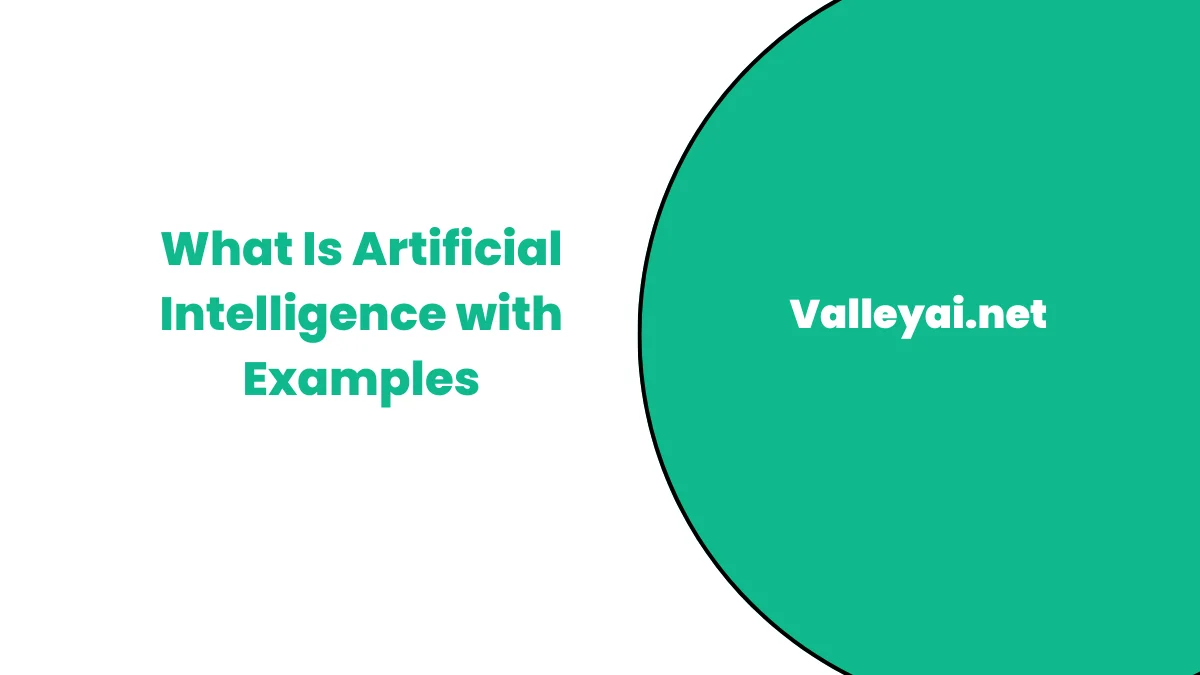What is artificial intelligence, with examples? This question has been asked countless times in recent years as AI has become more prevalent in our lives. AI is a broad term that encompasses a variety of technologies and applications.
Artificial intelligence has the ability to act like a human being. We experience AI daily in our lives while surfing the internet or using social media.
In this post, we’ll be exploring the history of AI, defining AI, what it is, and some of its various types. We’ll also discuss some of the ways that AI is being used currently and in the future, as well as provide a few examples to illustrate our points. So read on to learn all you need to know about AI!
History of artificial intelligence
The history of artificial intelligence can be traced back to the 1950s when scientists first began to develop computers that could solve complex problems. However, it was not until the late 1980s and early 1990s that AI experienced a resurgence, thanks to advancements in computer technology and the emergence of new algorithms.
Artificial intelligence has a long and storied history that dates back to the earliest chatbots. Today, it’s used in a variety of ways, from digital assistant software to medical diagnosis systems.
Read also: The evolution of ai
What is artificial intelligence, with examples?
Artificial intelligence is a broad term that encompasses a variety of technologies and applications.
Generally speaking, AI refers to systems that can perform tasks that normally require human intelligence, such as understanding natural language and recognizing objects.
However, the definition of AI can be quite fluid, and there is no single authority on the subject. Artificial intelligence is a broad term that encompasses a variety of technologies and applications.
Examples of ai in daily life
There are many examples of artificial intelligence (AI) being used in various fields around the world. Some examples include:
- Autonomous cars. You need only a smartphone app to drive.
- Drones
- Alexa, Siri, tesla, and other personal assistants
- Recommendation by Netflix
- Smart TVs
- Airlines
- Robots
- Spam email filtration and online chatbots
So now you can clarify your concept about what is artificial intelligence with examples.
Types of artificial intelligence
There are two main methods of AI: machine learning and expert systems. Both of these methods fall under the broader category of artificial intelligence.
Machine learning is an approach to AI that is grounded in the idea that AI can be taught to perform tasks by being exposed to huge volumes of big data. Many people consider machine learning to be the dominant form of AI, and it has been applied to a wide variety of problems.
Expert systems are also considered forms of AI because they are designed to imitate the way that a human expert solves a problem.
However, a key difference between machine learning and expert systems is that machine learning is data-driven, whereas expert systems are goal-driven.
This means that a machine learning algorithm will learn to solve a problem by being exposed to data alone, whereas an expert system will use a set of rules to solve a problem.
Machine learning has been used to build some of the most sophisticated applications in the field of artificial intelligence. One of the most famous applications of machine learning is Google’s program, AlphaGo, and the Deep blue machine. Deep blue defeated the chess grandmaster in a game.
Deep learning is a type of machine learning that has become extremely popular in recent years. Deep learning is an AI technique that involves training a neural network to learn how to perform a specific task.
The neural networks are “deep” because they have many layers, each of which is made up of many nodes.
How does artificial intelligence work?
Artificial intelligence (AI) is a form of software that can “learn” through experience. This process allows AI to improve its accuracy over time by adapting to new situations and data. Additionally, this type of software is able to identify patterns and make deductions on its own, which makes it particularly useful for tasks such as identifying objects or faces in photos or videos.
It is a subset of machine learning, which is a subcategory of artificial intelligence. Machine learning basically allows computers to learn without being explicitly taught. This happens through the use of algorithms that are designed to improve the performance and accuracy of future predictions based on data sets.
AI has a number of applications, from aiding in search engine results and text recognition to improving chatbot usability and machine learning.
As artificial intelligence technology continues to advance, we may see even more amazing things! For now, know that AI is a powerful tool that can be used for good or bad purposes – it is up to the user how they use it. So, go ahead and experiment with AI – you might be surprised at the results!
Artificial intelligence in the future
Artificial intelligence (AI) is one of the most important technologies that we will continue to see in the future. As AI becomes more advanced, it will be used for a wider range of tasks, including finance, healthcare, transportation, and manufacturing. Not to mention, AI technology is already being used in marketing and advertising.
As artificial intelligence continues to develop at an exponential rate, there are many potential implications for society as a whole.
For example, Jobs that traditionally require human interaction may eventually be replaced by robots or other automated systems. This could lead to huge job losses overall, but it could also create new opportunities for those who are able to adapt quickly enough!
In the meantime, be sure to check out all the latest AI-based content and trends to stay up-to-date on the latest developments.
Why is artificial intelligence important?
Artificial intelligence (AI) is becoming increasingly important as it improves our ability to process and act on information. In the near future, AI will likely play a more significant role in our lives than ever before. Some of the benefits of AI include:
It is a technology that has the potential to revolutionize a lot of sectors of our society and economy. As we start to see its effects on our daily lives and the world around us, it’s important to be mindful of how we’re using AI and what implications it may have.
Conclusion
Hope you got some knowledge from this post about what is artificial intelligence with examples. Artificial intelligence is a rapidly-growing field that is still being explored by scientists and engineers. However, what is known today is enough to allow us to make some predictions about its future.
AI is still evolving and growing more powerful by the day, so keep an eye out for new developments! As we move into the future, artificial intelligence will undoubtedly play a bigger role in our lives. It’s a fascinating field with a lot of potential, so make sure to keep up with the latest news and developments.
FAQ: What is artificial intelligence with examples?
After a brief discussion on Ai and its examples, there are a lot of questions asked by people. I covered some questions so that this post can give suitable answers.
What is the difference between artificial intelligence and machine learning?
The difference between artificial intelligence and machine learning is that artificial intelligence is a subfield of machine learning, while machine learning is a subfield of computer science.
What are some examples of artificial intelligence in use today?
The computer scientist Douglas Hofstadter first coined the term artificial intelligence in a paper in 1968. In recent years, artificial intelligence has been used in a number of ways, including speech recognition, facial recognition, natural language processing, computer science and mathematics research, autonomous vehicles, and computer games.
What are the potential benefits of using artificial intelligence?
There are a number of potential benefits of using artificial intelligence, including reducing processing time and costs, automating complex tasks, improving customer service, and being able to respond more quickly to customer needs.
What is artificial intelligence, and what are its main components?
Artificial intelligence is a field of computer science that deals with the creation of intelligent agents, which are systems that can reason, learn, and act autonomously. Some of its key components include deep learning, natural language processing, neural networks, and robotics.
What are the advantages and disadvantages of artificial intelligence?
Artificial intelligence (AI) has many advantages, including the ability to process huge amounts of data quickly and make complex decisions. It can also be used for automation tasks or predictive analytics, which is useful for business purposes. Additionally, AI can improve the efficiency of human workers by taking on some of their responsibilities.
Disadvantages include fears about its long-term impact on jobs, robot pandemics, and concerns about how AI will impact our cognitive abilities. as well as possible cybersecurity risks.
- SaaS Growth Strategies: A Complete Guide for Long-Term Success - May 18, 2025
- How Data Science Is Powering Business Decisions in 2025 - April 17, 2025
- The Future of Data-Driven Networking: Trends and Innovations - March 12, 2025

